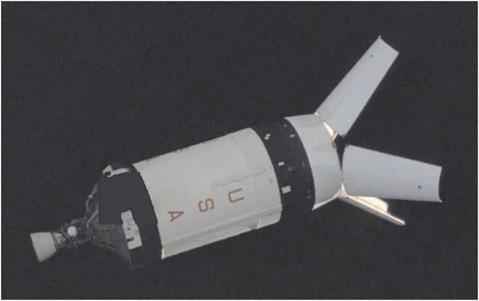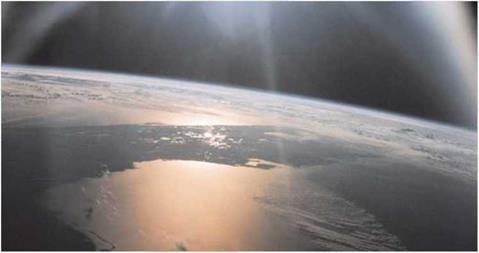TESTING THE BLOCK II: APOLLO 7
The Apollo programme became a juggernaut towards the end of 1968 as flights were launched every two or three months in the race to achieve Kennedy’s deadline. The C-mission of Apollo 7 gave the Block II spacecraft, without a lander, its first manned test. It began on 11 October 1968 with a launch by the smaller Saturn IB vehicle. Its crew of Wally Schirra, Donn Eisele and Walt Cunningham spent 11 days orbiting Earth, which was more than enough time for a mission to get to the Moon and back, and it proved the CSM to be a worthy, spacefaring ship.
As soon as the spacecraft achieved orbit, the crew separated it from the S-IVB second stage and attempted to practise the type of turnaround manoeuvre that would be required of future flights, when the lander would have to be plucked from inside its protective shroud. As soon as he saw the S-IVB, Schirra noticed that one of the four hinged petals of the shroud had not fully deployed. He cancelled a simulated approach manoeuvre for fear of it hitting the spacecraft, and later recommended that the panels be jettisoned instead.
|
Apollo 7’s S-IVB and its deployed shroud petals in Earth orbit. (NASA |
|
The Florida peninsula as seen from Apollo 7. (NASA) |
Throughout the early part of the mission, the crew concentrated on achieving their most important goals: firing the main engine repeatedly to make rendezvous passes with the S-IVB (whereupon it was noted that the balky shroud petal had properly deployed) and proving the operation of their navigation system. With these tests satisfactorily performed, the crew spent their remaining time carrying out secondary tests of the Apollo system and completing a programme of Earth photography.
Despite the operational success of the mission, history tends to remember it for the breakdown in relations between the crew and flight controllers in mission control. A dose of the common cold made its normally wise-cracking commander increasingly grumpy. In weightlessness, the symptoms of cold are exacerbated by the inability of the congested head to drain itself. The other two crewmen, both rookies, were drawn into the soured atmosphere with the result that, having irritated management, neither man flew in space again. Schirra had already announced his retirement from space flight.












